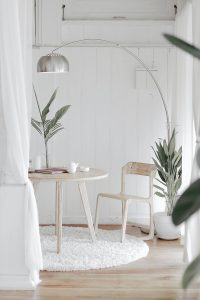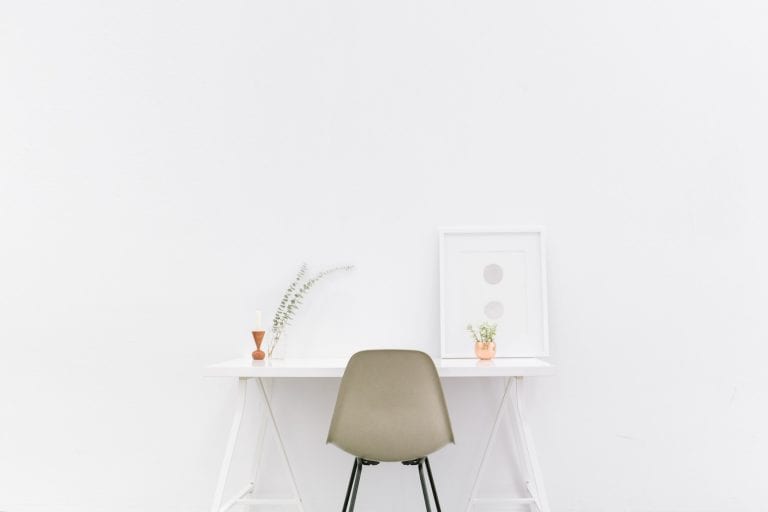When I first discovered the concept of minimalist living, it wasn’t what I expected. I’d always envisioned minimalism as a stark, modern aesthetic, but I quickly learned it’s so much more. It’s not just about a clutter-free home, it’s about decluttering your mind, too.
Minimalist living is about intentionality, about determining what holds the most value in your life and letting go of the excess. It’s about making room for the things you love, eliminating distractions, and living with purpose.
But don’t get me wrong – minimalist mindset or minimalist living isn’t about depriving yourself. It’s about optimizing your life, choosing to live with fewer resources and finding satisfaction in simplicity. It’s about making mindful choices and understanding that less can indeed be more.
Minimalist Living: 10 Strategies for Simplifying Life
Minimalism journey is often easier said than done. But these strategies have helped me save money, find clarity in the chaos, reducing stress and emphasizing what’s truly important.
Decluttering
A natural place to start is decluttering your physical space. Begin by getting rid of one item that you don’t need or use. From there, move onto larger areas like shelves or storage spaces. If you haven’t used a particular item in the past year, consider donating, selling, or tossing it. It’s not about getting rid of everything – it’s about keeping what truly holds value.

Kitchen Tips
Next, turn your attention to your kitchenware. Go through items you frequently use and get rid of any that you haven’t used in a while. Through the process of elimination, retain only what’s necessary, useful and a source of joy.
Minimalist Wardrobe
It’s time to tackle your wardrobe next. Do you have clothes you haven’t worn in a year? Donate them to someone who’ll use them. Keep your wardrobe simple, functional and most importantly, reflective of who you truly are.
Adjust Your Thought Process
One important aspect of minimalist living is realigning your thought process. Consumerism has conditioned us to constantly want more. Challenge that mindset. Live with intentionality, choosing the meaningful over the superfluous.
Stop the Influx of New Things
Another crucial strategy is to curb the incoming flow of new possessions. Objects, excess stuff tend to accumulate over time. Make it a point to regularly clean out your space and think of less stuff, prevent unnecessary items from taking root.
Less Stress
Studies have shown that a simplified lifestyle and getting rid of life’s excess leads to less stress. Particularly, decluttering your environment can significantly enhance productivity and focus. Embrace this not only for a better peace of mind but also for a healthier, more present lifestyle an live intentional life.
Relationships
Turning to only what personal, it’s also about shaping healthier relationships, more meaningful life. Let go of toxic connections that drain rather than nourish. Freeing up emotional space can often be more satisfying than freeing up physical space.
Shop Quality, Not Quantity
When making purchases, focus on quality over quantity. Instead of blowing your budget on piles of cheap, unnecessary items, consider investing in a few high-quality, durable goods.
Invest in Experiences
Remember that life is about experiences, not spending more money or material possessions. Instead of spending money on things, invest in experiences. Go out, meet new people, build relationships,travel, and learn. Living is so much more than simply existing amidst an array of possessions.
Re-Audit Your Life Frequently
Living minimally isn’t a one-and-done deal. It’s an ongoing process. So evaluate your life regularly. Are there areas of excess that have sprung up? Traces of old habits creep in? Audit your life frequently to ensure you’re living aligned with the principles of minimalism.
Remember, this isn’t about depriving yourself. It’s about living with intention, finding value in simplicity and making purposeful choices. And, ultimately, forming a lifestyle that truly enriches you. Hopefully, these strategies will help you ease into minimalist living and make it a part of your daily life. The objective here is to provide tips for a sustainable minimalist lifestyle, not just a fleeting trend.
What is minimalist living?
Benefits of minimalist living:
Embracing minimalist living can yield significant benefits. It’s not about sacrificing comfort but about cherishing the value in what you have and shedding the excess. By making conscious choices about what stays and what goes, you prioritize essentials, streamline your life, and enhance productivity while reducing stress. It’s about curbing the constant influx of new possessions and focusing on quality over quantity. Investing in experiences over material possessions can lead to a richer, more fulfilling life. Minimalist living is an intentional lifestyle that can positively transform multiple aspects of your life. It’s a journey worth embarking on for a simpler, more meaningful existence.
Frequently Asked Questions
What is Minimalist Living?
Minimalist living is a lifestyle choice that prioritizes value, simplicity, and conscious decision-making over material possessions. In minimalist living, individuals aim to reduce excess possessions, make purchases centered around quality, and invest more in experiences.
What Are the Key Strategies for Minimalist Living?
Key minimalist living strategies include making conscious decisions about possessions, prioritizing essential items, curbing new possession influx, focusing on quality over quantity during purchases, and investing in experiences rather than material items.
What Differentiates Minimalist Living from Deprivation?
In minimalist living, the emphasis is not on deprivation but finding value in what one possesses. Unlike deprivation where comfort and personal taste are scarce, minimalist living allows for these within the boundaries of value and necessity.
Can Minimalist Living Affect Productivity?
Positive transformations in productivity are associated with minimalist living. By simplifying life and eliminating excess, individuals can reduce stress and boost productivity.
What’s the Relationship Between Minimalist Living and Stress Levels?
Minimalist living can significantly mitigate stress levels. By eliminating excess and making conscious possession decisions, minimalist individuals usually experience lowered stress and a more tranquil lifestyle.
Is Minimalist Living Applicable Only to Certain Individuals or Classes of People?
No. Minimalist living is not exclusive to any individual or social class. Whether wealthy or not, any individual can adopt a minimalist living by consciously deciding to find value in their possessions and reduce unnecessary items.

